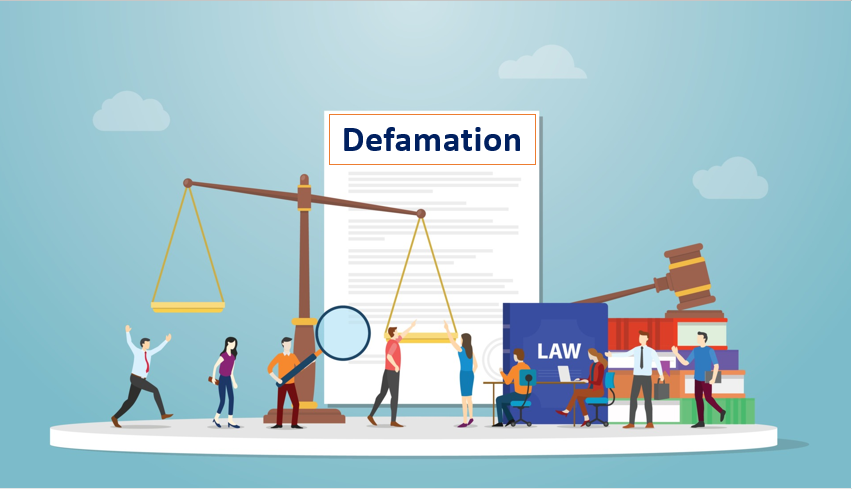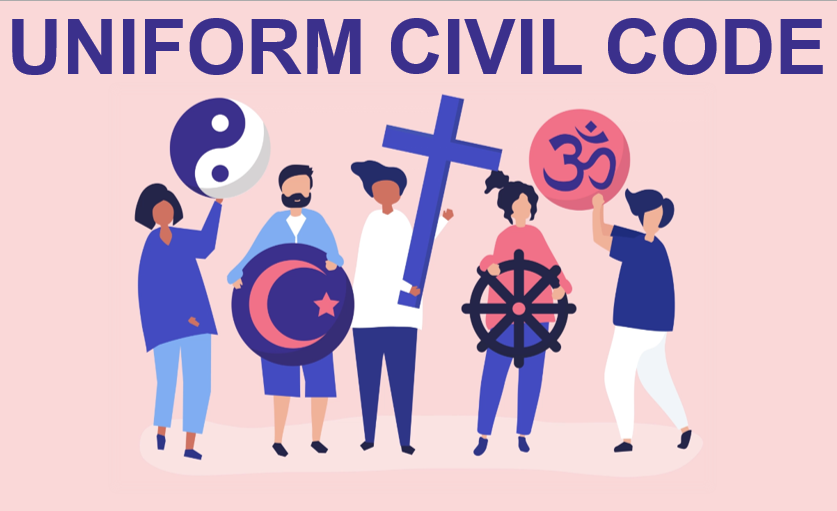Published on 27th April 2025
Authored By: Bandhani Ghosh
Shyambazar Law College, University of Calcutta
Abstract
Death Penalty or Capital Punishment is a form of punishment which enables the State to lawfully take the life of a convict. Such convict upon been sentenced a Death Penalty, is known as convict on a death row. Since this form of punishment, unlike other forms like simple imprisonment or life imprisonment, is irreversible in nature, due to which any mistake in deciding the real culprit or in the procedure can spark widespread public uproar. The main question which always arises while considering the concept and applicability of capital punishment is whether it is a necessary deterrent or a human rights concern ?
In this article, efforts have been given to provide with a thorough understanding of the concept of capital punishment in India, the capital crimes, few landmark cases which further defined the meaning and scope of death penalty in india and human rights concerns along with certain points to keep in mind while deciding for a death penalty which would be humane and just.
Keywords – Capital Punishment, Death Penalty, death row, deterrent, capital crimes
Introduction
Death Penalty refers to the punishment of legal execution of a prisoner who is on a death row. In India , currently there are around 539[1] prisoners on death row in India. Death Penalty is also known as Capital punishment and it is considered as the highest punishment for crimes in India under the main criminal substantive statute of India – The Bharatiya Nyaya Sanhita,2023 (formerly the Indian Penal Code, 1860). The topic of death penalty has always been a debatable topic due to the ambiguities of answers to the main questions relating to the death penalty – first, whether death penalty is necessary for having a deterrent effect on the minds of people? And second is , whether the death penalty truly punishes the actual perpetrator or an innocent man’s life gets sacrificed? Well, the answers to such questions actually divide the population into two – the supporters or proponents of the death penalty and the opponents or critics of the death penalty.
History of Death Penalty in India
A society cannot be one with no criminals or wrongdoings since no society is an ideal society. Hence, existence of crimes and criminals is evident in India as well and to prevent such crimes, punishments act as a safeguard. The main objective of punishment is to protect the society from mischievous and undesirable elements by deterring potential offenders. There are different theories of punishments – Deterrent theory, Preventive theory, Retributive theory, Reformative theory etc. Capital punishment is one such punishment which can provide a deterrent effect on the minds of the future offenders.
Death penalty in India is not a recent one. It has been in practice since ancient times in India. In the Hindu and Muslim laws , as well, we can find references to the death penalty for certain grave and heinous offences. In Chanakya’s Arthashastra and in Manu’s Manusmriti, provisions for the death penalty can be found. During the Mughal era, India has seen practice of the death penalty, although the number and mode differed from Akbar to Aurangzeb!
During the British period, there had been large instances of death punishment given to the freedom fighters and revolutionaries which indeed raised huge protests against the British government in India. But after independence, reform had been made which made the provision of death penalty non arbitrary.
Article 21[2] of the Constitution of India provides that under no circumstances, the right to live can be taken from any citizen except by due process of law. It means that the State can take away the life of a citizen by following the process of law. Although, only grievous and heinous offences are punishable by death.
The main general substantive criminal statute that is the Indian Penal Code, 1860, provides that 11 offences within the territory of India are eligible for a Death Penalty. Such offences are mentioned in sections 120B[3] (punishment of criminal conspiracy) , section 121[4]( waging or attempting to wage war against the Indian government) , section 302[5] and 303[6] ( punishments of murder and punishments of murder by a person already in life imprisonment) etc.
The introduction of the Bharatiya Nyaya Sanhita, 2023 has even increased the scope of capital punishment by increasing the capital crimes from 11 to 17 . There are even other offences like offences in relation to enemy , mutiny, desertion, as been included in special statutes like The Organised Crime Act, 2001 , Army Act, 1950 etc.which are also capital offences. In India, juveniles and people with mental illness or insanity are exempted from the death penalty.
Judicial interpretations
The Supreme Court of India has upheld the constitutionality of the death penalty and stressed for the application of the death penalty only in cases which are heinous and garve enough that life imprisonment or any other alternative would not suffice. The Supreme court has also advocated for the prevention of the arbitrary use of Capital punishment.
Following are few landmark cases in the context of death penalty in India :
- Jagmohan Singh v. State of Uttar Pradesh (1973)[7]
Through this case, the Supreme Court has established that capital punishment does not violate Article 14, 19 and 21 of the Constitution of India as long as it is imposed through a fair, just and reasonable procedure .
- Rajendra Prasad v. State of Uttar Pradesh (1979)[8]
The court,in this case, emphasized that the death penalty should be awarded only when the crime is so heinous that there is no possibility of reformation.
- Bachan Singh’s case[9]
The constitutional validity of the death sentence was upheld by the Apex Court of India by a majority of 4:1 with the dissenting opinion of Hon’ble Justice P.N. Bhagwati. The case established the doctrine of “ rarest of rare” cases and held that the death penalty can only be given to cases where crime is of “ rarest of rare” nature.
- Machhi Singh case[10]
In this case, the Court has listed 5 categories when the death penalty can be awarded. The 5 categories are manner of commission, motive of the offender, magnitude, personality of the victim and impactor of such crime on the society. This case gave more clarity to the doctrine of rarest of rare cases.
- Deena v. Union of India11
The issue raised in this case was, whether the mode of execution in India, that is , by hanging, violates Article 21 or not. The court held that hanging by neck till death is not inhumane and legally valid in India.
- TriveniBen v. State of Gujarat[11]
Through this case , it was established that unnecessary delays in execution is inhuman and leads to the violation of article 21 and hence is unconstitutional.
- Dhananjoy Chatterjee v. State of West Bengal[12]
The Court stressed that awarding the death penalty is justified where crime shakes societal conscience.
- Nirbhaya Case[13]
The Supreme Court held that in cases of brutal rape and murder, death sentence is appropriate.
Human rights concerns
The Law Commission of India has taken up the subject suo moto due to the technological advances in the field of science, technology, medicine, anaesthetics and since more than three decades have passed by after the 35th Report of the Law Commission on Capital Punishment, 1967 with reference to the mode of executing death penalty.[14] However, the commission didn’t come with any recommendation to change the mode of execution and that they did not subscribe to the view that any other alternative method will reduce the deterrent effect of the death penalty. The Royal commission in its report on Capital punishment 1949-53 dealt with the prevalent modes of execution of death punishment and concluded that three conditions must be fulfilled in the execution of death sentence…1) execution must be less painful 2) there should be least mutilation of the body 3) it must be quick.
Death penalty is different from other punishments because it is irreversible and hence careful procedure must be made in order not to make an innocent lose his life due to flaws in the system.
The critics of death sentence argued that death penalty violated the right to life[15] as been guaranteed by the Constitution of India. Life imprisonment is considered a better form of punishment because it gives a chance to the perpetrators for rehabilitation , which is not given in case of death penalty. There have been instances of discrimination due to castes as been shown by reports that most of the prisoners on death row are persons belonging from lower castes. Hence, there is a need of a more just and humane way of consideration of death penalty, such can be done by keeping the following points in mind :
- Fair sentencing
The need for a more thoughtful and humanistic approach while deciding for death sentence is necessary. The court must examine all possible alternatives ensuring that justice is not rushed but has been considered carefully.
- Following Supreme Court Guidelines
In order to give the accused a fair, humane and well-informed hearing, the lower courts must follow the guidelines made in Manoj and Ors. v. State of Madhya Pradesh17.
- Rethinking Capital Punishment
The Law Commission of India (2015) recommended abolition of Death Penalty in India except in terror related cases. Hence, India must think of doing so when the global scenarios also suggest an abolition of the death penalty.
- Addressing Caste inequalities
The structural discrimination the criminal justice system affects the lower caste people a lot. Reform must make the justice system unbiased against the vulnerable.
- Law Commission Reports
The 35th report recommended the retention of the death penalty due to India’s unique circumstances.
The 187th report suggested a more humane mode of execution.
The 262nd report asked for the abolition of the death penalty for non terrorism related offences.
Conclusion
Death Penalty is legally valid in India and India is one of those nations in the world which retains the death penalty but it is only given to cases which are rarest of the rare and grievous enough that the convict deserves to die. The debate to retain or to abolish capital punishment still continues but what is important to note is that no innocent must lose his life due to flawed system or social discrimination or any other reason , to ensure that, several points must be kept in mind like fair sentencing, following the supreme court guidelines, reconsideration of death penalty etc. Also, the convicts of heinous crimes must also not be spared since the action of taking one’s life or commission of other such capital crimes can not be justified by just life imprisonment as a punishment. Hence , proper scrutiny must be made while deciding and awarding death penalty to any convict. And in India, there are very less instances where death penalty has been awarded to a convict, hence , India’s judicial system do act in a careful and humane manner in deciding punishments for crimes.
References
- Project39a,https://www.project39a.com/annual-statistics-page-2021(last visited March 15,2025).
- INDIA CONST. art. 21.
- Indian Penal Code,1860, section 120B, No. 45, Acts of Parliament, 1860(India).
- Indian Penal Code,1860, section 121, No. 45, Acts of Parliament, 1860(India).
- Indian Penal Code,1860, section 302, No. 45, Acts of Parliament, 1860(India).
- Indian Penal Code,1860, section 303, No. 45, Acts of Parliament, 1860(India).
- AIR 1973 SC 947.
- AIR 1979 SC 916.
- (1982) 3 SCC 24.
- AIR 1983 SC 957.
- 1983 AIR 1155.
- AIR 1989 SC 1335.
- (1994)2 SCC 220.
- (2020) 1 S.C.R. 761.
- LAW COMMISSION OF INDIA, Consultation paper on Mode of Execution of Death Sentence And Incidental Matters,S3WaaS,(15thMarch,2025,2:55p.m)https://cdnbbsr.s3waas.gov.in/s3ca0daec69b5 adc880fb464895726dbdf/uploads/2023/01/2023010583-1.pdf.
- INDIA CONST. art. 21.
- (2022) 9 S.C.R. 452.


